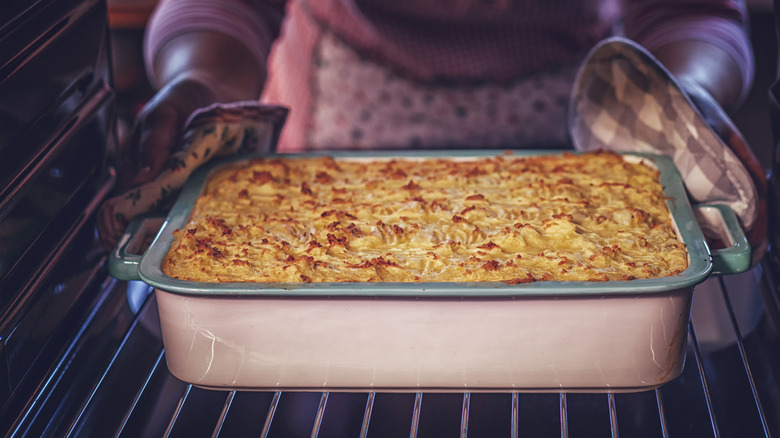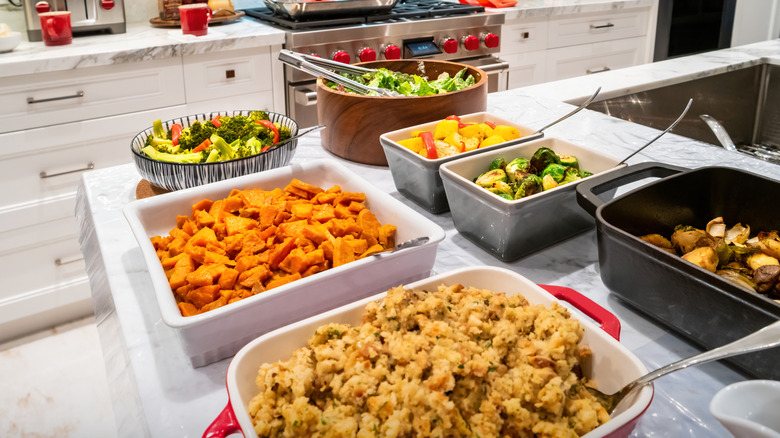The Best Oven Temperature To Keep Food Warm Before Serving
There are good reasons not to let a casserole or steak get cold before serving them, and they go beyond not wanting to ruin the meal. You also want to prevent the dish from entering what food safety folks call the danger zone — a span of temperatures that are ideal for bacteria to multiply. So when you're using an oven to keep a roast or veggies warm, it's important to account for this concern.
According to the USDA, hot foods should generally be held at a temperature above 140 degrees Fahrenheit to slow bacterial growth. If your oven has a "keep warm" setting, it's often designed to hover somewhere between 170 and 200 degrees Fahrenheit. In a situation where your food is only going to sit for around 15 to 20 minutes, the University of Nebraska-Lincoln suggests setting the temp at 200 to 250 degrees. Keep in mind that when the dish in question is a steak or other animal-protein, you should always use a meat thermometer to ensure it was cooked properly and stayed out of the danger zone while sitting.
What can go wrong?
If hot food slips to a temperature between 40 degrees and 140 degrees Fahrenheit and lingers there, it increases the chances that hazardous microbes such as Salmonella or E. coli will take hold, possibly leading to food poisoning. In fact, bacteria can double in as little as 20 minutes.
Of course, you should also safeguard the quality of your meal. Letting food sit too long in a warm oven can compromise texture and flavor. Meats may dry out, and sauces could reduce too much. So, it may help to cover them (with foil or lids) to retain moisture. It's also helpful to stir or rotate your dishes periodically to prevent the heat from getting too concentrated.
Another important thing to keep in mind is that keeping food warm in your conventional oven may be slightly different to that of a convection oven. That's because convection ovens use fans to distribute heat, which can cause food to dry out more quickly.

